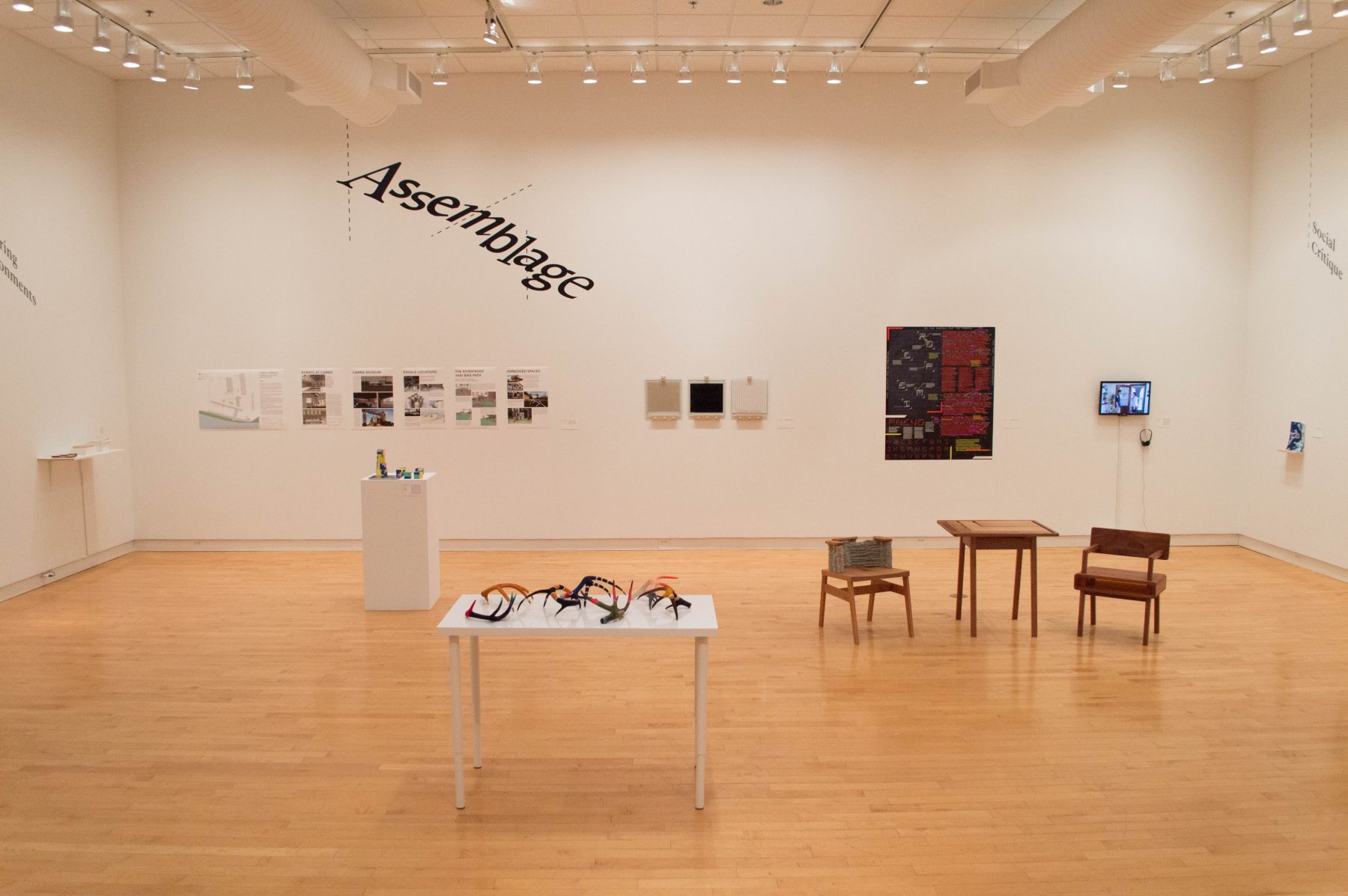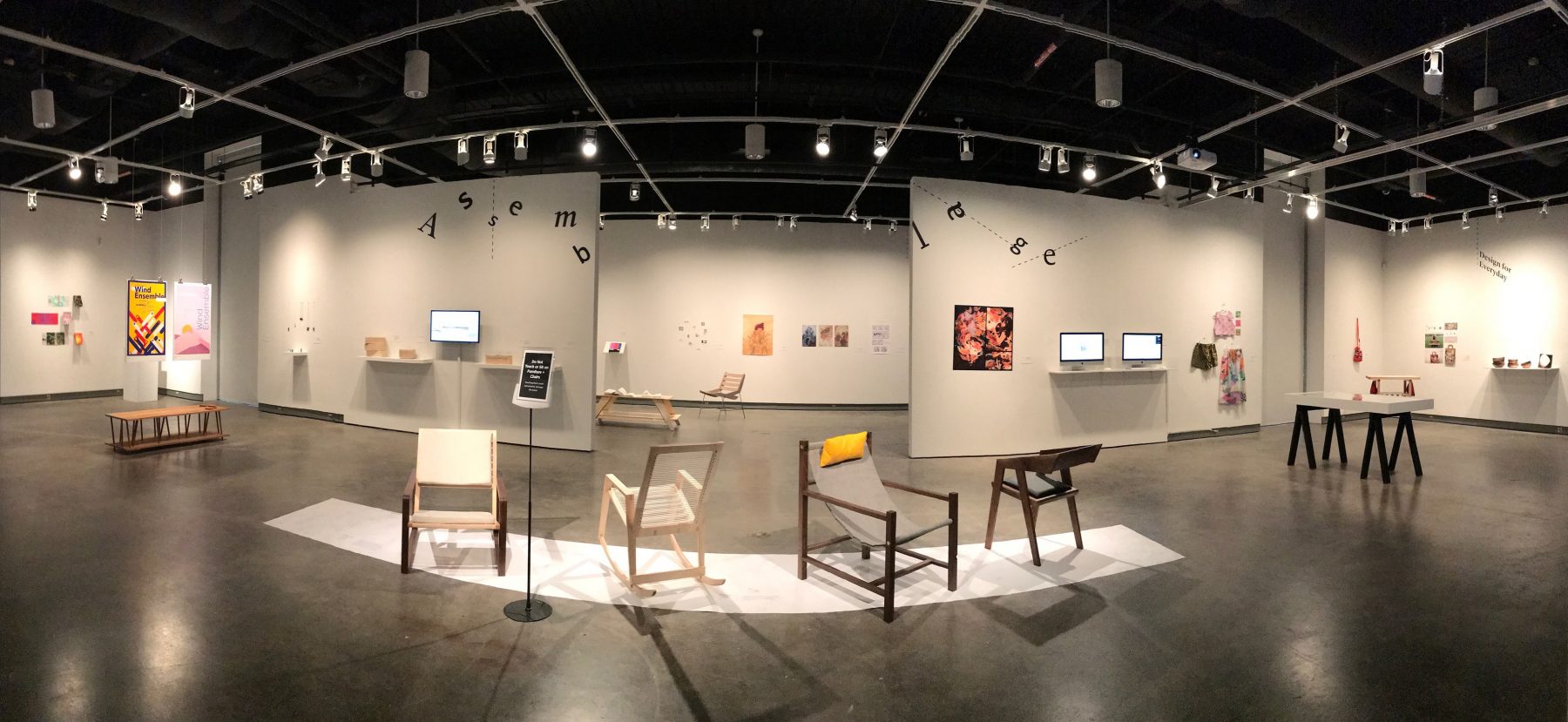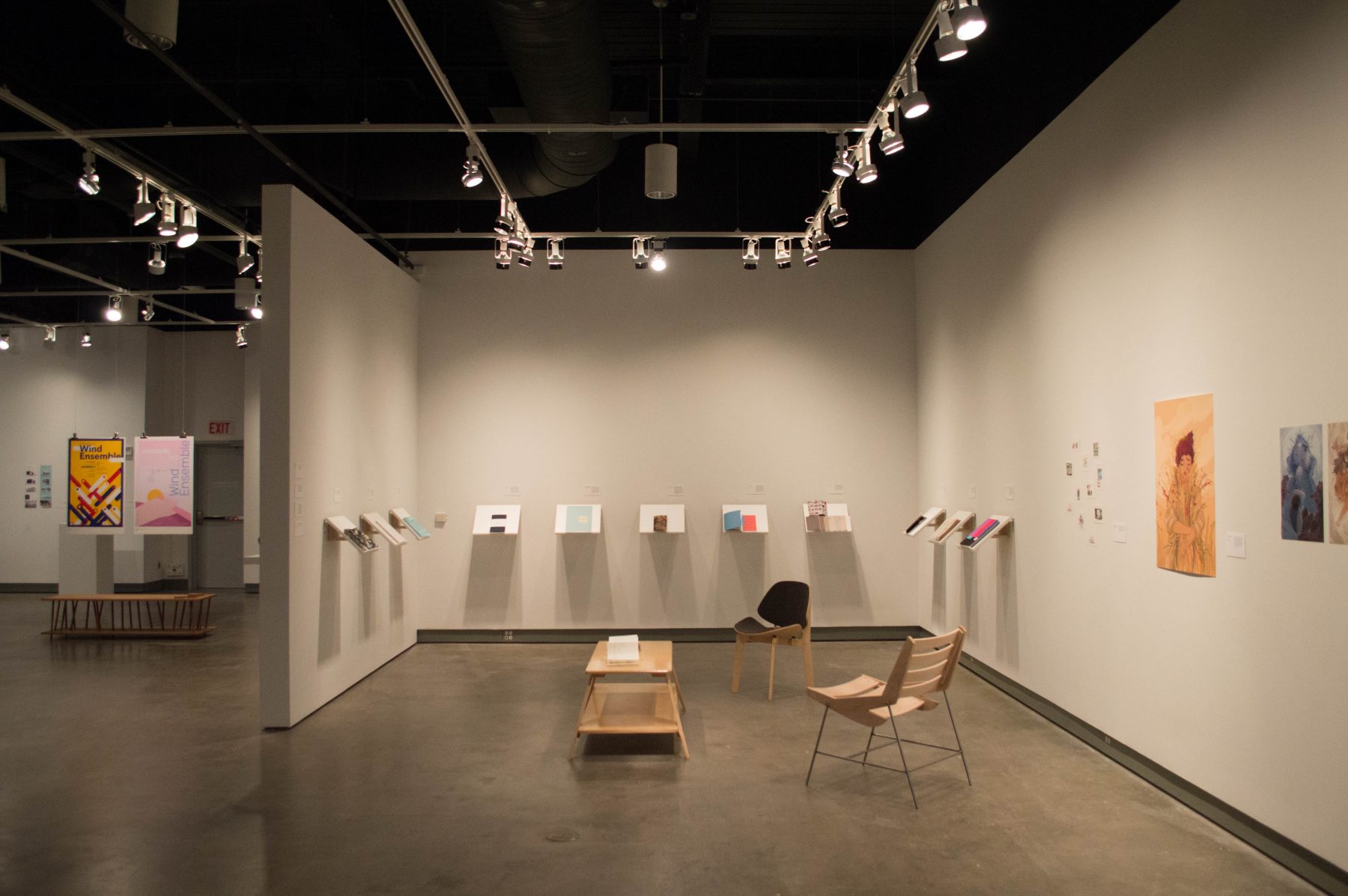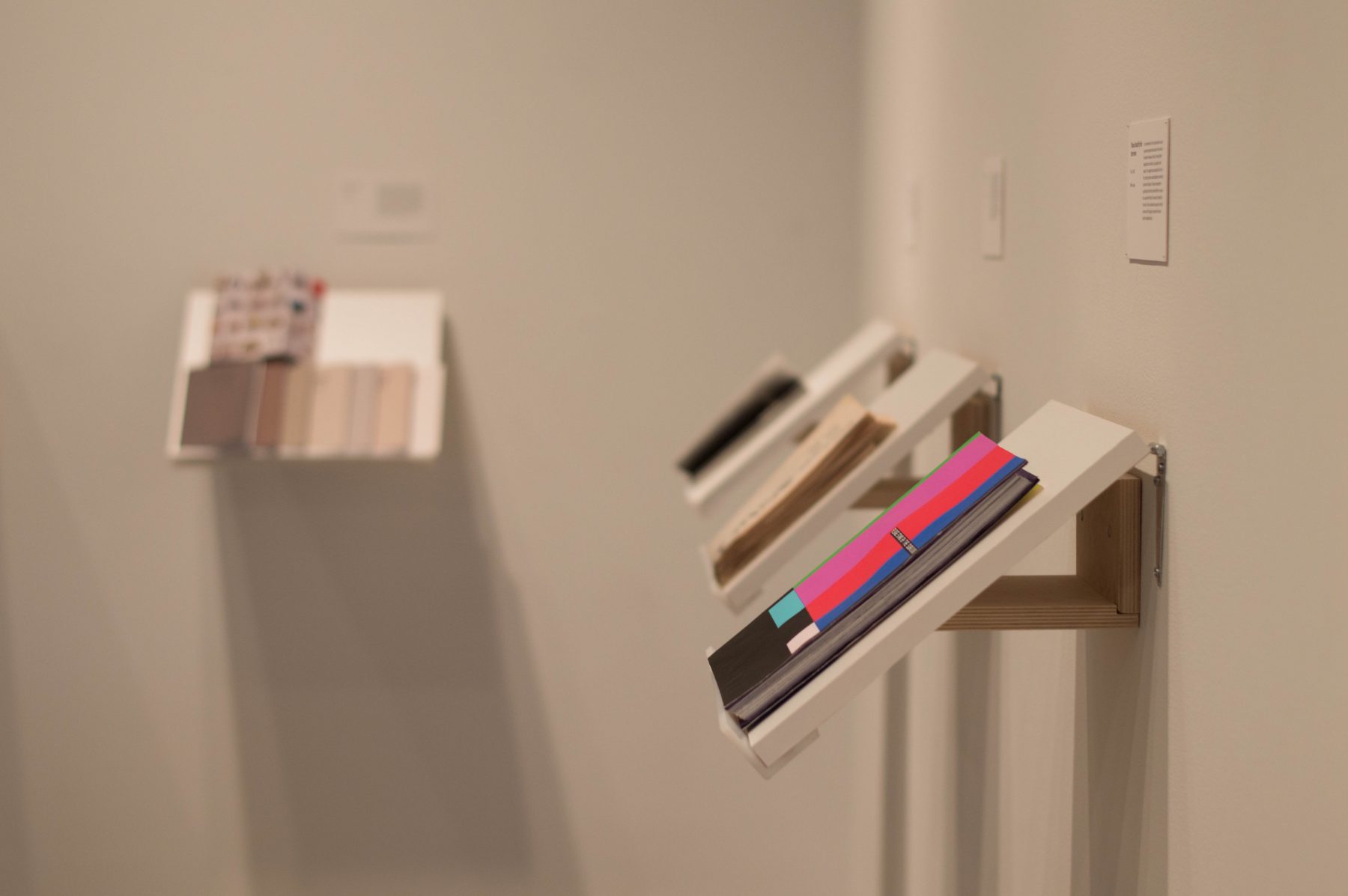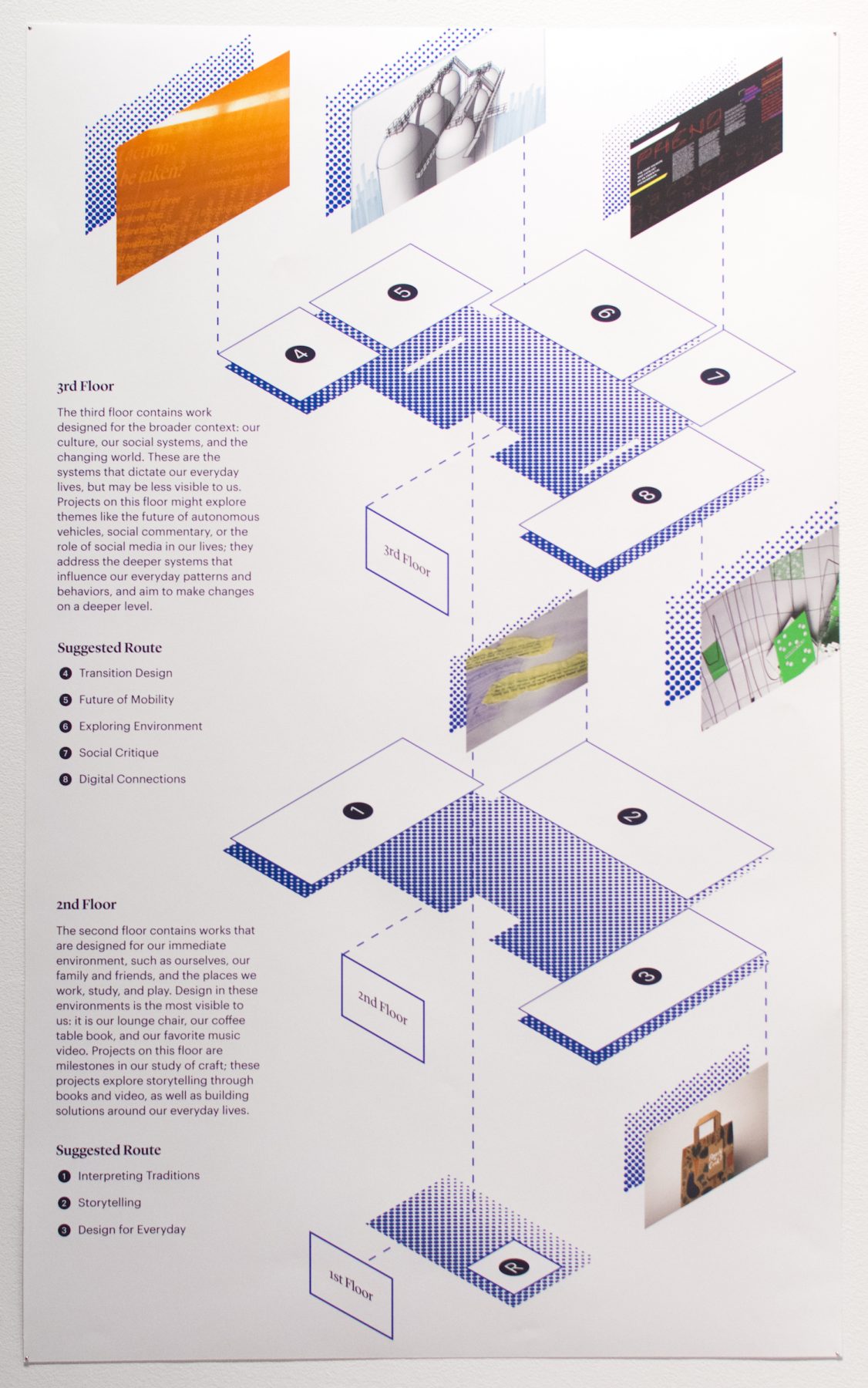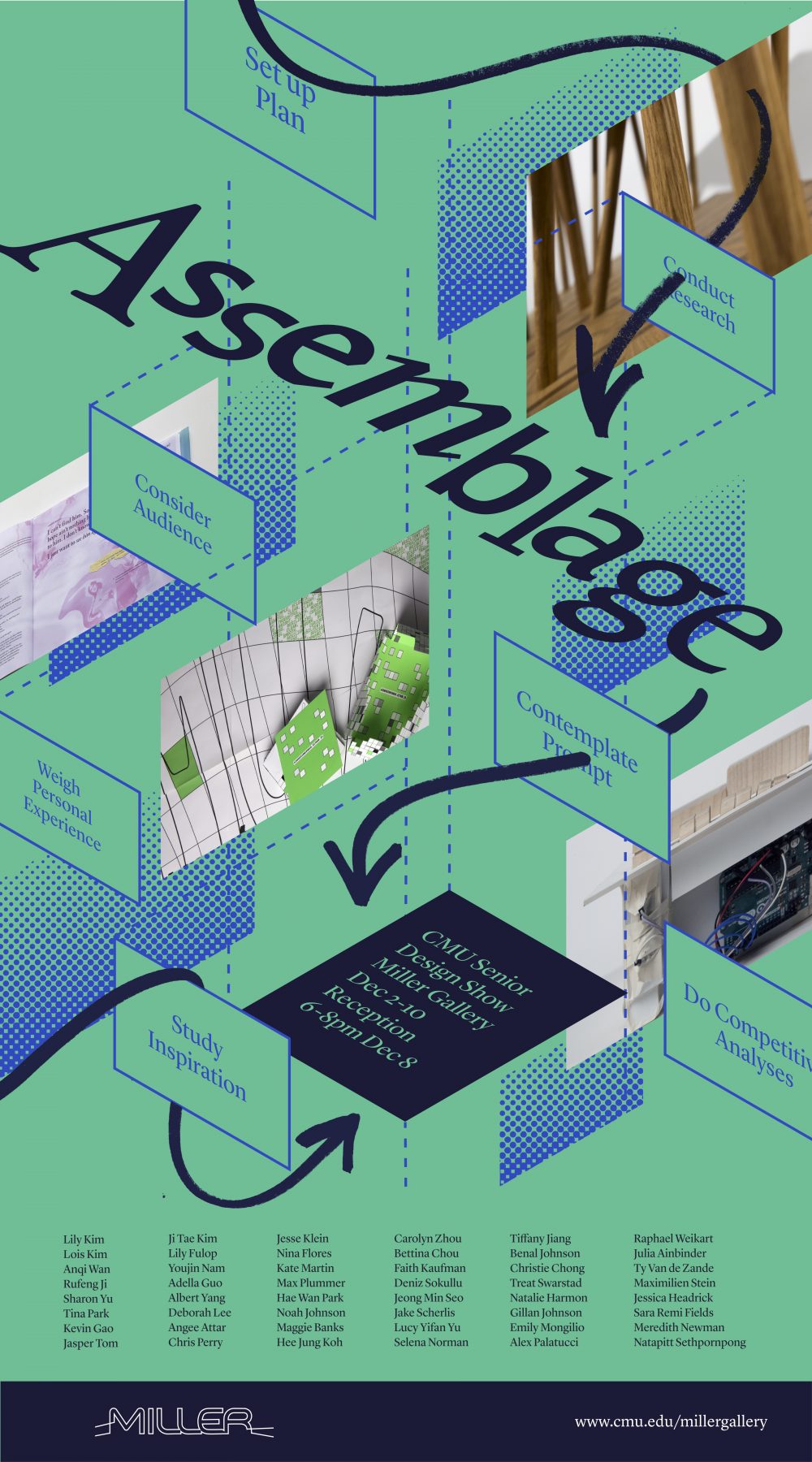The Project
Each year, the senior design class of the the School of Design is given the opportunity to exhibit their work from the past three and a half years at the university gallery, the Miller. For this undertaking, we are given full responsibility for the organization, curation, and presentation of the exhibit. Our first step in organizing ourselves was to split into three teams: Budget/Catering, Brand/Marketing, and Curation.
Designing the Concept
I had the opportunity to be one of three representative for the Curation team throughout the project. Our team’s first responsibility was to ideate and define the the concept and organizing principle of the senior exhibit. This theme could be a commentary on the personality of the class, our work, or a comment on design as seen through the work. To come up with a concept that could encompass 100+ project submissions, as well as a honestly reflect the work of 46 students was a big challenge. We held meetings to brainstorm possible ideas, and I lead workshops to flesh out these concepts. Our initial meetings began by discussing memorable exhibit experiences and viewing relevant groupings of our work.
From the work we began to see groupings of projects based on the reach of the project.
We asked ourselves, who is this project for? Was it for the designer to learn a new skill? Or for the greater community to grow?
These questions lead to organizing principles that would help place projects in each room of the gallery, spread out over two floors. The final principle addressed the scale and audience of the work. Each project was categorized by the scale of the audience: immediate (personal, home, neighborhood, school), intermediate (city, local business, local culture) or broad (state, country, social norms). This organizing principle weaved into the imerging concept as well. This concept describes designers relationship with their work and its effect on the surrounding environment.
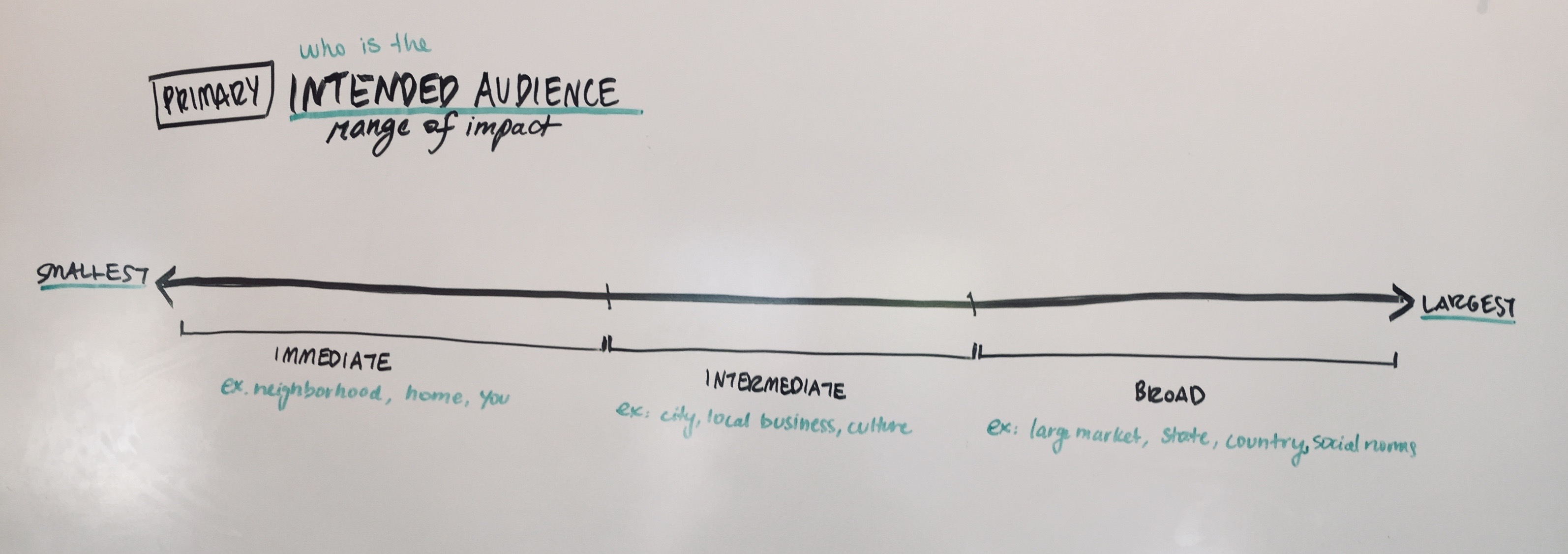
Creating a brand
As the curation team, we delivered a concept statement to the Brand and Marketing team, who then did visual iterations on that concept. The product of these exercises was our brand, Assemblage. This brand describes the process of how we build our projects by assembling our research, past experiences and new skills into a final deliverable. This process different for each individual and thus reflects our own unique perspective. In addition to the Curation team, I worked with the Brand team as a liaison to communicate the ideas and organization. The floor-map illustration is one such example of this collaboration, show-casing the organization of the work through the language of the brand (pictured above).
Building the experience
Once we had established the brand and organizing principle the Curation team chairs, Alex Palatucci, Meredith, and I began iterating on layouts of projects in the space. Although we had groupings based on theme and scale, the experience of the audience in the space factored into the final layout. Each set of projects defined its unique exhibit need by its medium and theme. For example, in the room with projects falling under “Digital Connections”, we used a combination of iPads and posters to display works. In the “Story Telling” environment, our Build team constructed wall mounted podiums for each book to encourage a focused individual interaction. Iterations of the floorpans were then brought to the larger Curation team for critique and adjustment.
We were given one week to move on and instal works in the gallery space. During that time the Curation representatives, Alex, Meredith and I, acted as move-on coordinators for each team and volunteer. A week after the show was opened the exhibit had a reception for all faculty and parents to view and experience the work.



